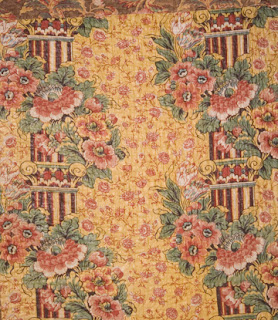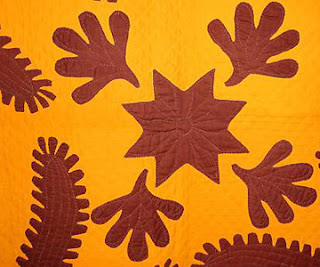One of the best things at the American Quilt Study Group seminar is the book sale where you can find out-of-print books from the authors' warehouses [garages] and some brand new books that you might not hear about elsewhere. I was pleased to pick up A Passion for Quilts: The Story of Florence Peto.
Co-authors Barbara Schaffer, Natalie Hart, Rita Erickson, & Rachel Cochran have been working on this sequel to the New Jersey Quilts book for years. Rachel on her blog Notes From the Basement describes Florence Peto and the book.
Where Liberty Dwells
by Florence Peto
She used antique fabrics to make small
medallion quilts in the 1950s and '60s
"Florence Peto (1881-1970) was a quilt collector, quilt historian, and quiltmaker. The quilts she collected and those she made were of such high quality that they became significant parts of museum collections. Florence's enthusiasm for life, thirst for knowledge, and love of quilts led her on a path she might not have expected as a young woman at the end of the nineteenth century. Through books, magazines, lectures, and exhibits, she shared the stories she found in quilts and created a legacy that endures from the twentieth century into the twenty-first century.
The book is 174 pages with more than 150 illustrations, including family photos and previously unpublished quilts. In addition, we are very lucky to have a foreword by Virginia Avery and contributions by Cuesta Benberry, Bets Ramsey, and Merikay Waldvogel.
If you'd like to order a copy, send a check payable to The Heritage Quilt Project of New Jersey in the amount of $32.95 plus $5.00 for shipping and handling to: The Heritage Quilt Project of New Jersey, P.O. Box 341, Livingston, NJ 07039. Or you can go to the website http://www.newjerseyquilts.org/."
Where Liberty Dwells by Barbara D. Schaffer
Barbara's just finished this top,
a copy of Florence's quilt above.
a copy of Florence's quilt above.
And Barbara's here:
These are two blogs to keep an eye on--- if you like antique quilts.See some posts I've done about Florence Peto
http://barbarabrackman.blogspot.com/2010/06/persian-pears-florence-peto.html
http://barbarabrackman.blogspot.com/2010/05/lafayette-or-jackson.html
Old Toile and Chintz by Florence Peto
1950-51
44 x 48"
The cover quilt.





















































